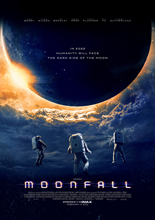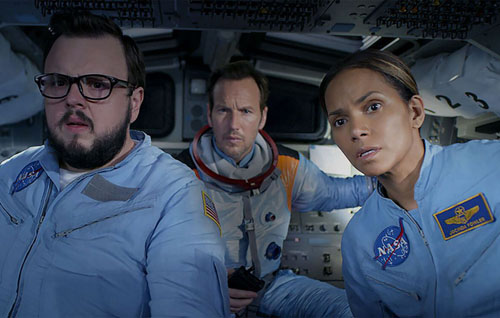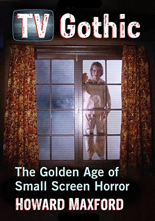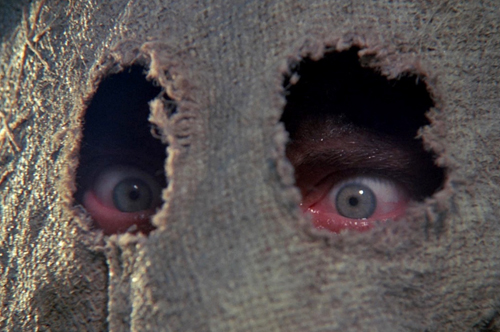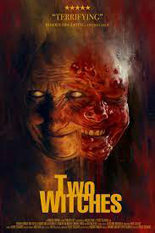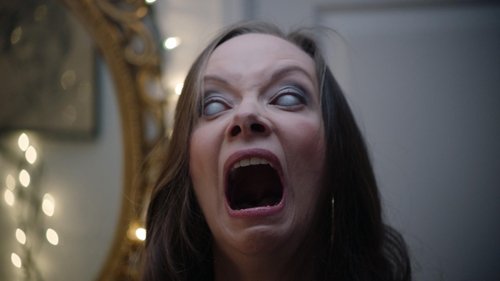
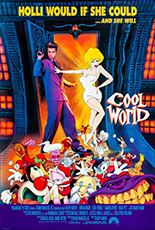 As hot as sex kitten Kim Basinger was/is, the cartoon version of her in Cool World, Holli Would, might be a bit better, if only for the way she cockteases anthropomorphic dogs, cats and a young Brad Pitt. Yowza! According to the ads, “Holli would if she could …”
As hot as sex kitten Kim Basinger was/is, the cartoon version of her in Cool World, Holli Would, might be a bit better, if only for the way she cockteases anthropomorphic dogs, cats and a young Brad Pitt. Yowza! According to the ads, “Holli would if she could …”
Ralph Bakshi’s Cool World really adapts the video of the Rolling Stones’ “Harlem Shuffle” by way of a cheap skin flick, leading to a great good okay movie. Coming out of the clink for, I guess, murder, artist Jack (Gabriel Byrne) drives around his comic studio and comic shop, letting all the early ’90s nerds know graphic artists drives girls crazy, especially Holli.
From his mostly drawn Cool World, Holli entices Jack to cross over into our world primarily by using sex as a weapon (to be fair, so was Kim Basinger). On her tail is Pitt — whose acting talent was apparently not always there — as a 1940s cop who has to take her down, as well as a few abrasive — but very Bakshi-lite — cartoons.
The breathy intonations aside, trailblazing animator Bakshi created a new playground in 1992, but sadly, everybody instead was watching progeny like Tiny Toon Adventures, The Ren & Stimpy Show and other post-ironic viewing. Meanwhile, Cool World was a smutty sex comedy, as was the custom in ’92. Monkeybone vibes, anyone?
Byrne is mostly fine and Pitt is all about the baby blues, but the selling point is the miniskirted Basinger, animated or not. But what I really dug was the closer tune, “Real Cool World” by David Bowie; maybe the movie should’ve been about some puppets? —Louis Fowler

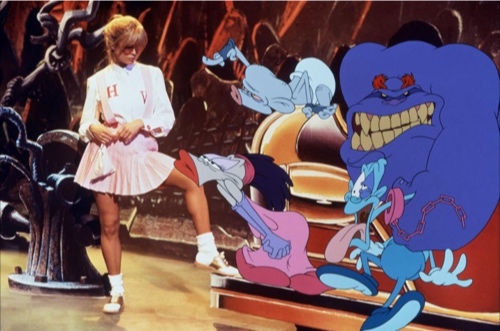

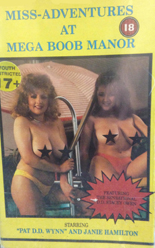 Attention, salesmen the world over: One particular bank in Scotland has an incentive program that bests any “president’s club” event. In exchange for your hard work, it buses you to a weeklong retreat at Mega Boob Manor — so named because it’s staffed by women with royally large chests.
Attention, salesmen the world over: One particular bank in Scotland has an incentive program that bests any “president’s club” event. In exchange for your hard work, it buses you to a weeklong retreat at Mega Boob Manor — so named because it’s staffed by women with royally large chests.

